There are so many reasons I love my job. Take, for example, a recent experience I shared with my husband regarding SilencerCo’s Switchback 22. The day shone bright and temps warmed the desert sand outside of West Valley City, Utah, home of SilencerCo.
Sponsored by SilencerCo
We had traveled out there for business with the #1 silencer company in the world, a team I’m proud to work with at The WON and at SilencerCo’s newly formed blog. I brought along the hubs, aka “Dr. Bomb,” so that he could see the factory and shoot guns with all the suppressors.
We had traveled out to a range so that we could shoot as much as we wanted to shoot. When it came time for him to shoot the Switchback 22, the magic happened. I saw him do something I’ve never witnessed on the range before … he smiled and laughed a little.
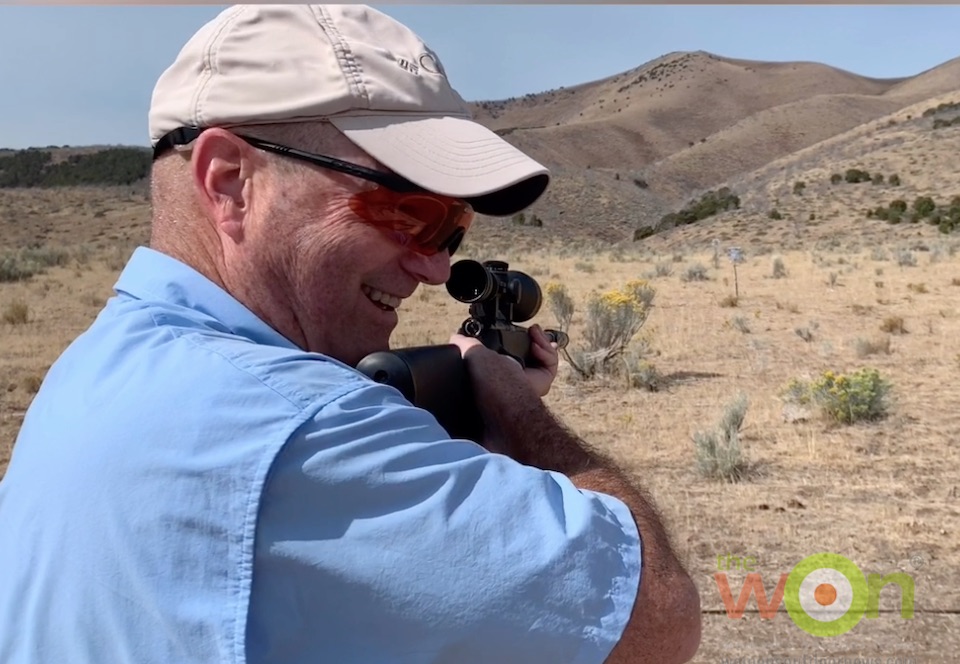
He took a shot with the suppressor attached to a rifle, and turned around and actually chuckled. He couldn’t believe how quiet the suppressor made the shot, and even though Josh Dietz (press relations manager) told us that we’d hear the gun’s action louder than the gun’s report, we didn’t believe him.
And then, Dr. Bomb took that very quiet shot. And he laughed. I think this suppressor might be one of his favorites. I know it’s most definitely mine. Here’s why.
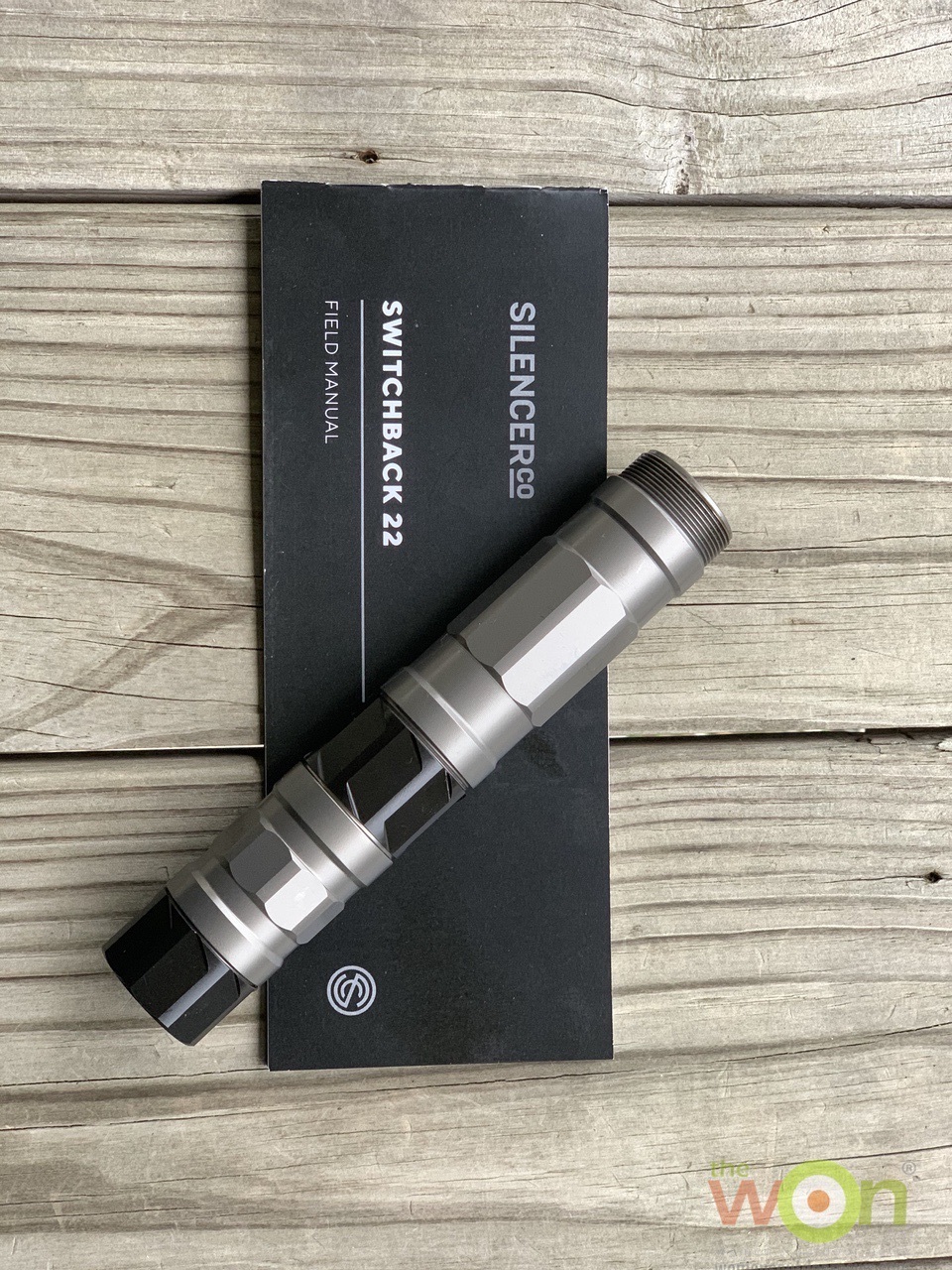
First of all, you get 3 for the price of 1 with this suppressor. Here’s the cool thing about it. Because of its modularity and the design of its tubes and baffles, you not only can assemble it into 3 different lengths (short, medium, and long) to change the weight and amount of suppression, but you can reverse some of the baffles in the long version to reduce the sound even more. To understand this, as SilencerCo says, use “rocket propulsion principles.”
On the technical side, after talking to Dr. Bomb about the design of the Switchback, I found out that when you arrange the conical baffles with the large openings toward the gun muzzle, you are using the Venturi effect to speed up subsonic gas flow and reduce its pressure (you’ve created a subsonic jet nozzle). Conversely, with supersonic flow and the same nozzle the opposite effect happens. Also, with supersonic gas if you reverse a baffle (putting the small opening toward the muzzle), you create a rocket nozzle that accelerates the gas flow. When you combine the 2 types of nozzle, you have a de Laval converging-diverging rocket nozzle similar to ones used by nearly every rocket engine out there to speed up subsonic combustion gas to supersonic speed and then to accelerate it out the nozzle for high thrust.
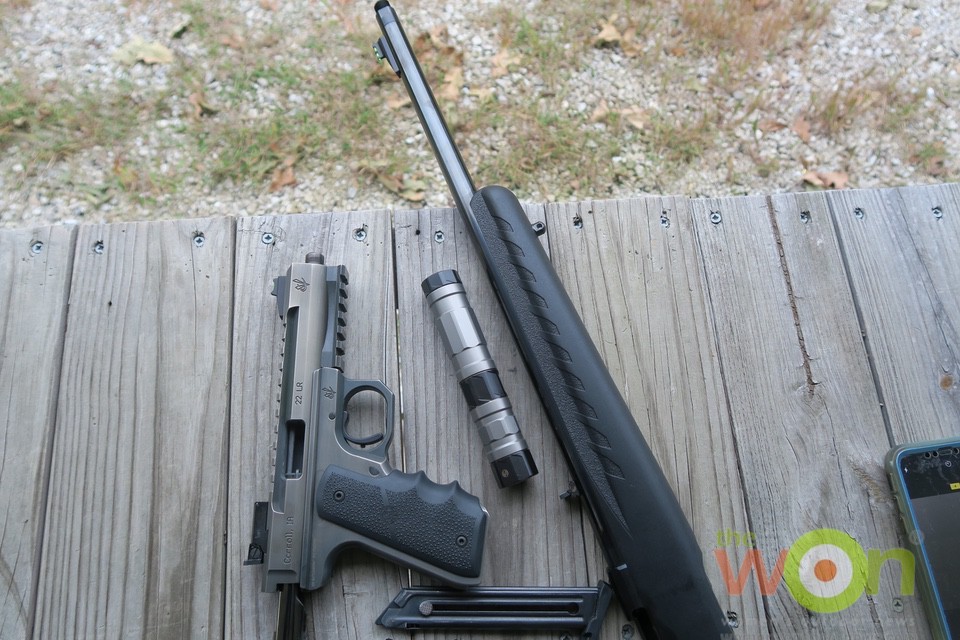
In a suppressor, though, with the right baffle spacing and design, you can speed up gas and create turbulence, then slow down gas and create turbulence, all the while lowering the gas pressure and eating-up its energy. Lower pressure and lower energy equal lower noise, and different from a rocket nozzle, a suppressor designer tries to get the slowest gas at the lowest pressure possible out of the end of the suppressor.
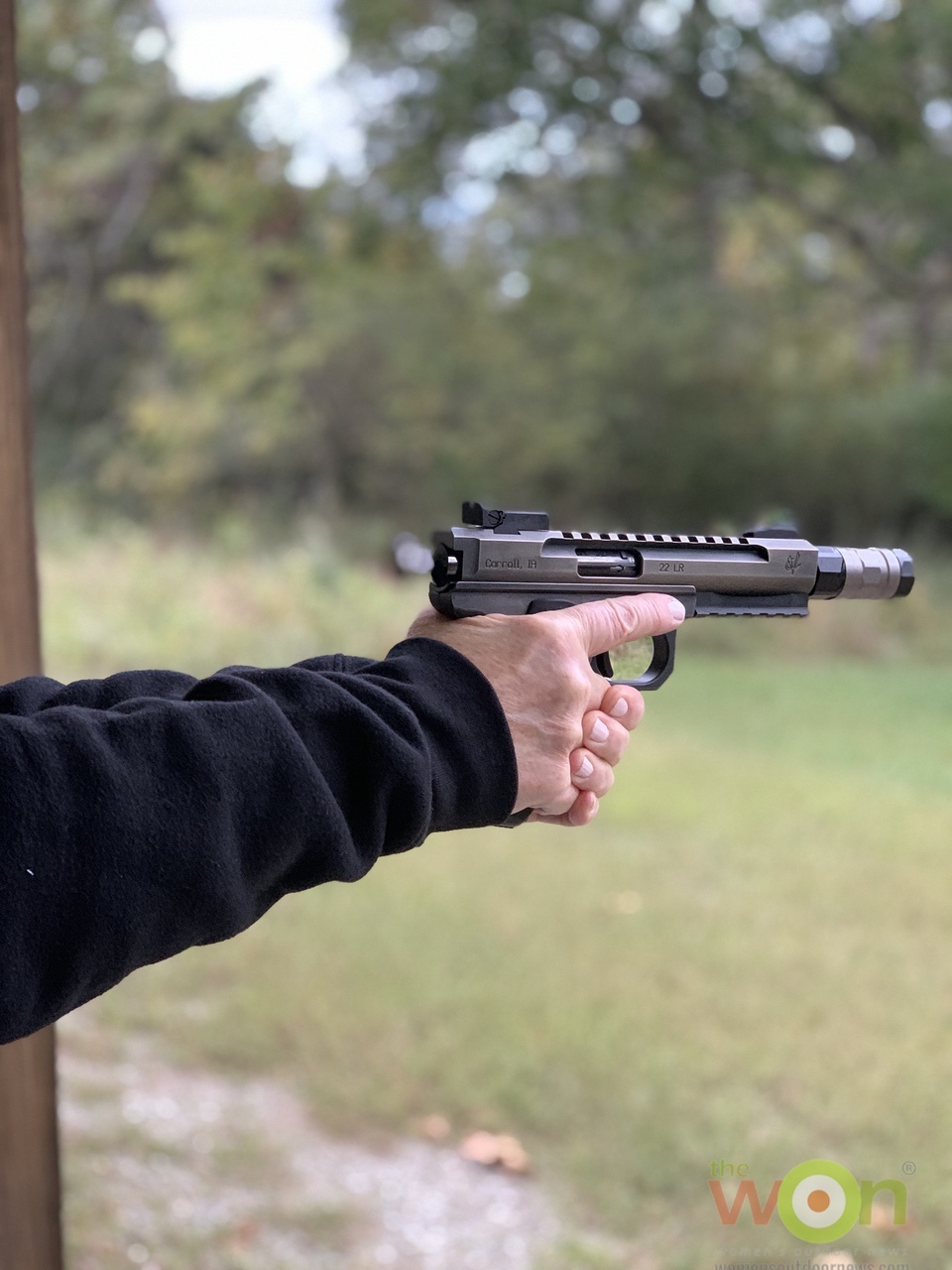
I shot through this suppressor with my Volquartsen Scorpion pistol, in all configurations, and then, added the longest length version to my Ruger American .22 rifle.
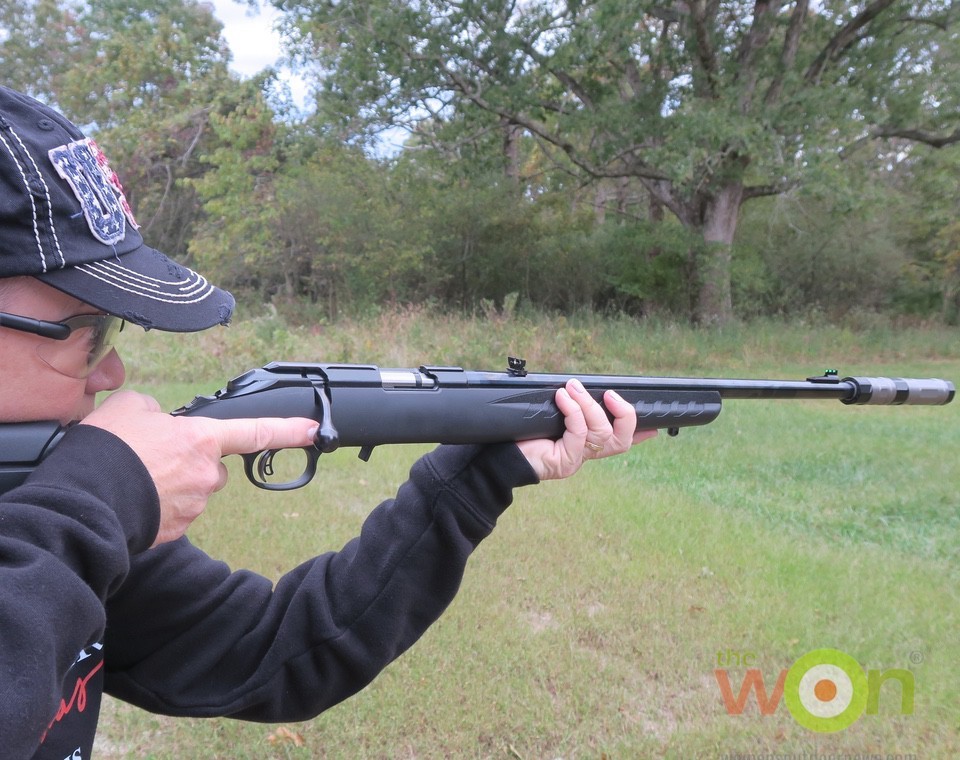
One thing that I can assure you of is that none of the suppressors affected the point of aim of either gun, up to 25 and 50 yards (pistol and rifle respectively). I also used all types of ammo, subsonic and supersonic.
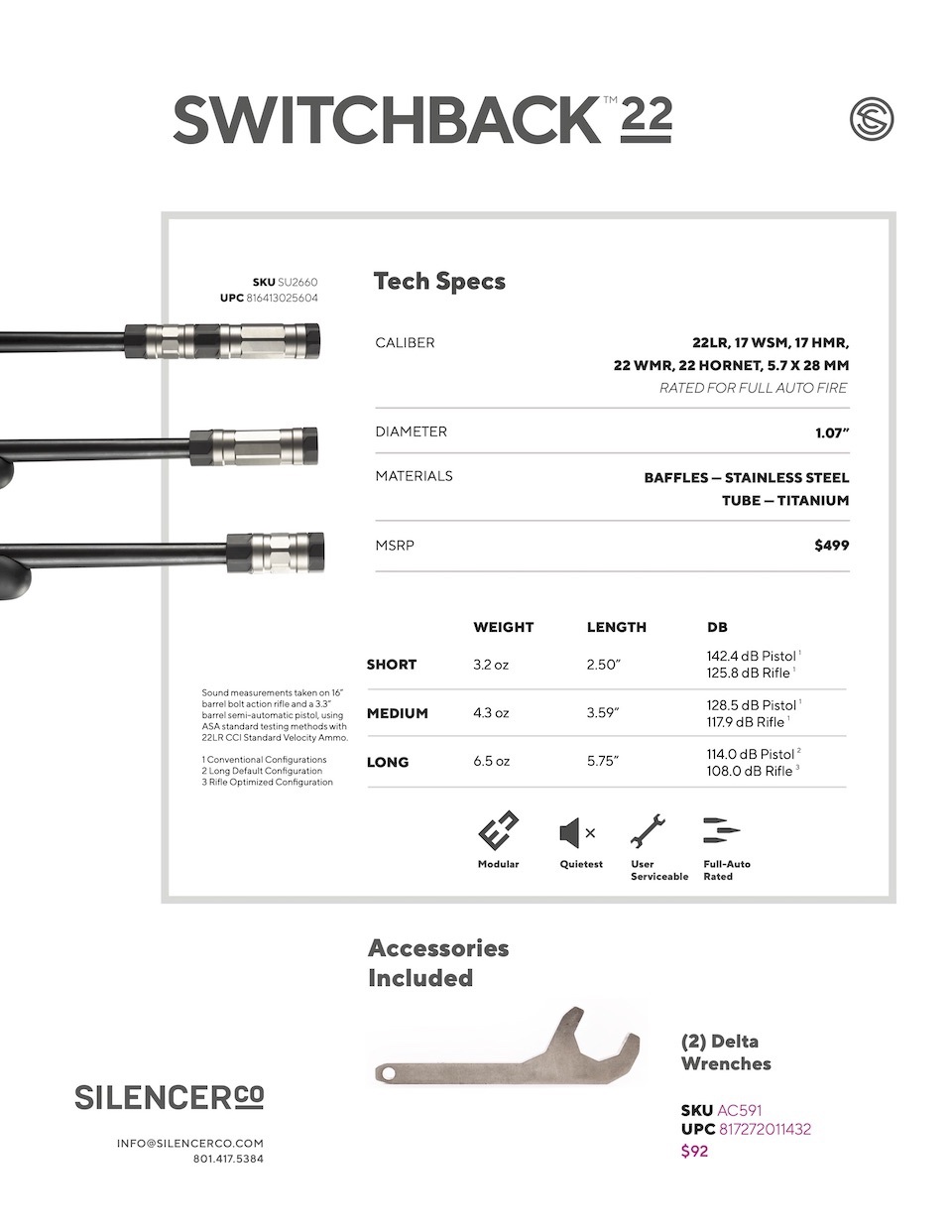
For the money, this suppressor is a great deal, as it could become a great accessory for a family gun – suitable for new shooters on a .22 rifle or pistol, or for that squirrel hunter or can plinker. I know my kids are going to love shooting with this one when they visit us this year.
Learn more about the Switchback 22 here.
Publisher/Editor Barbara Baird is a freelance writer in hunting, shooting and outdoor markets. Her bylines are found at several top hunting and shooting publications. She also is a travel writer, and you can follow her at https://www.ozarkian.com. View all posts by Barbara Baird